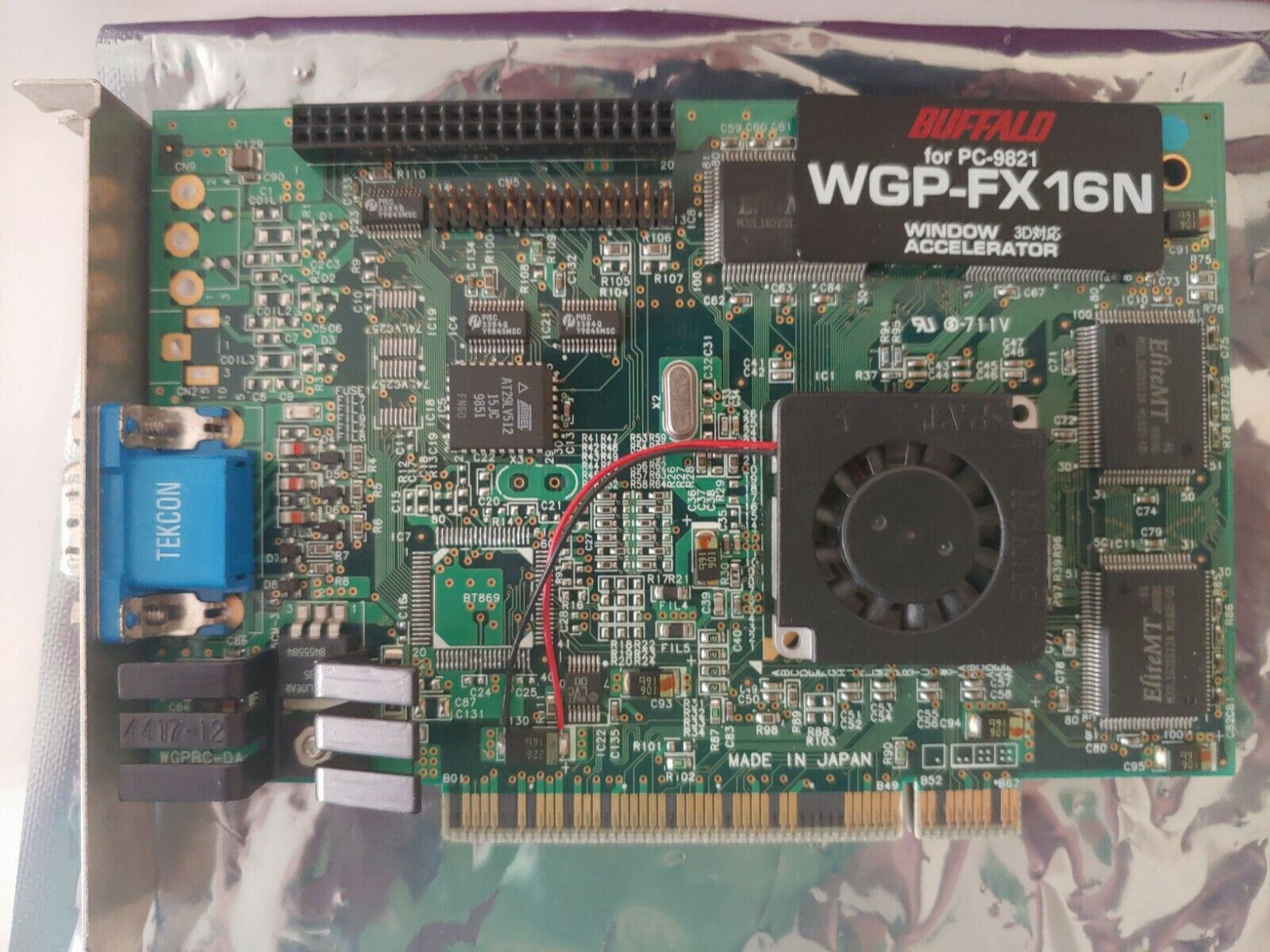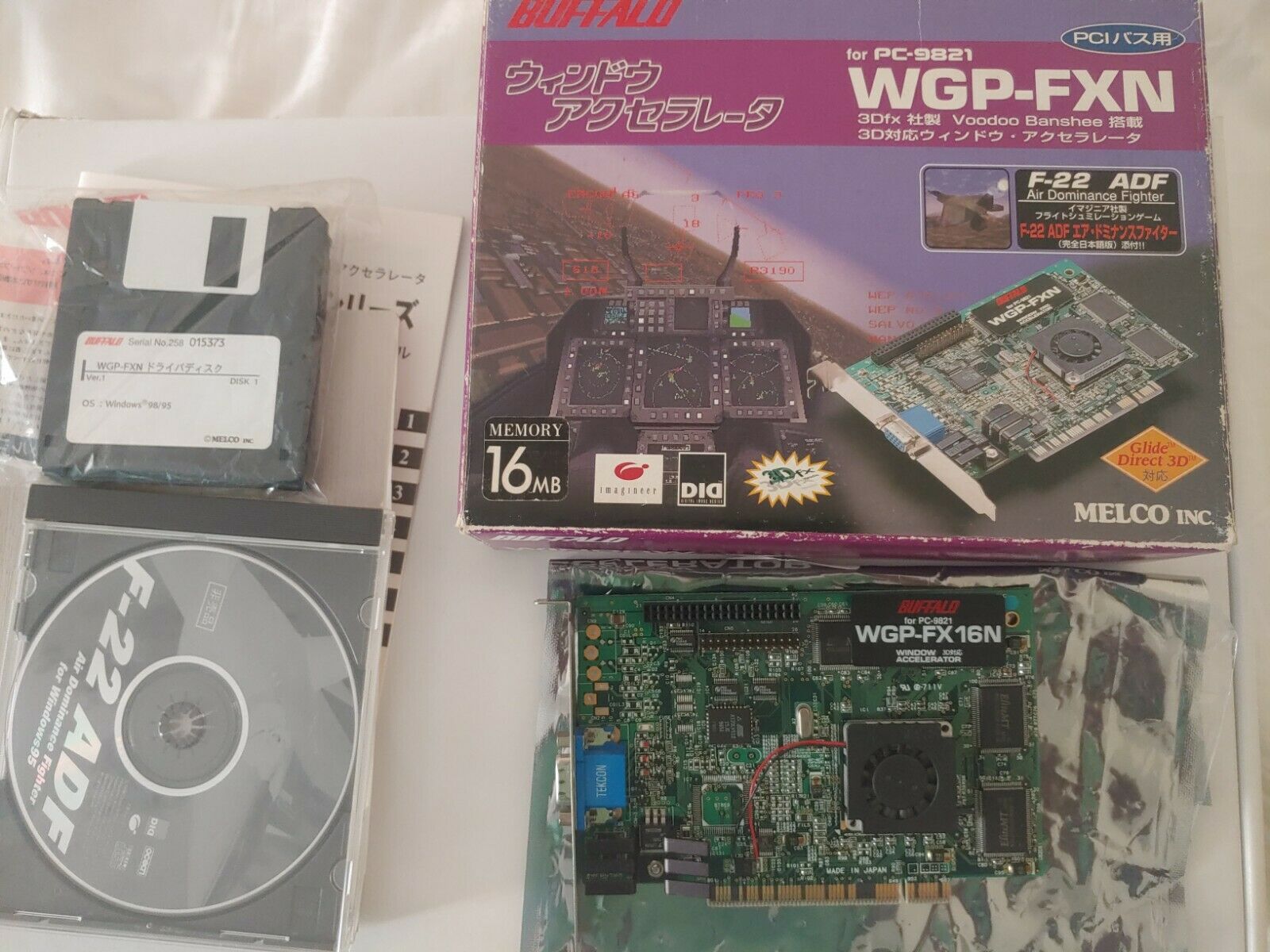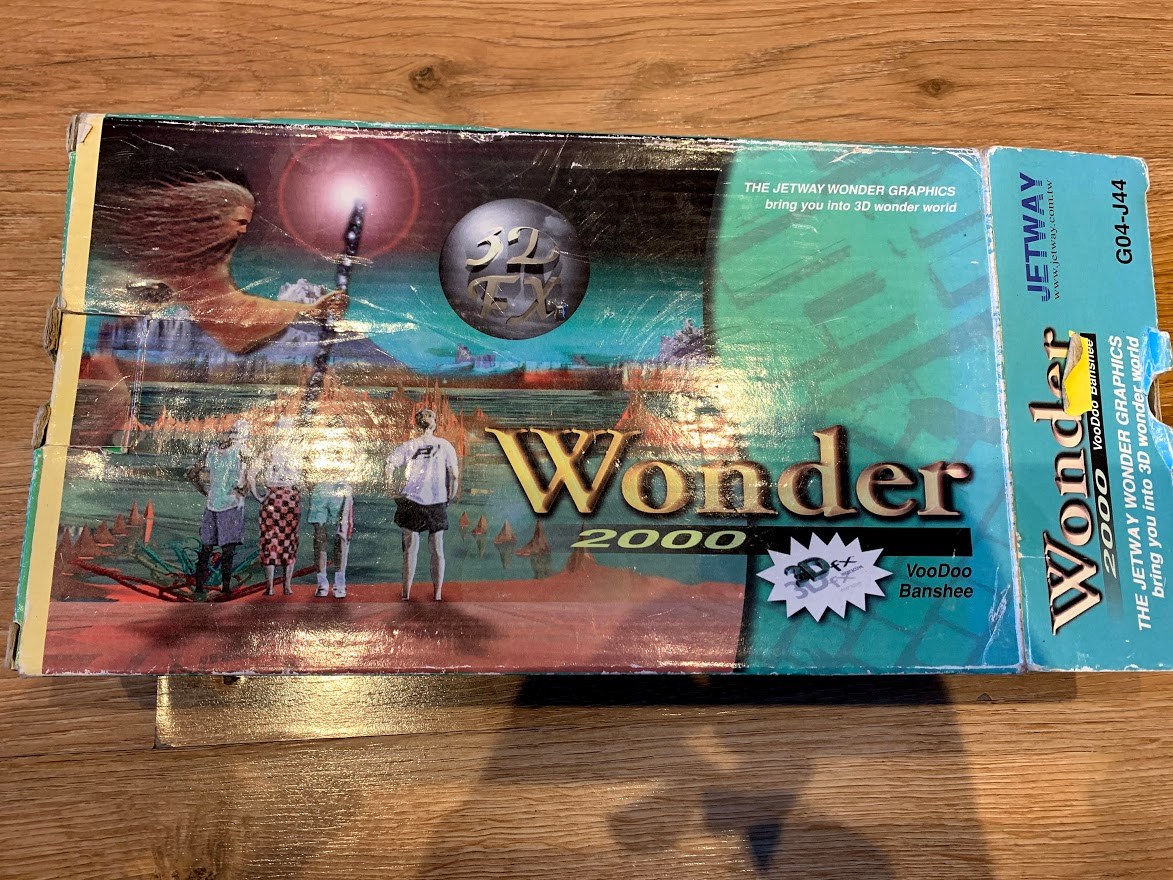3Dfx Voodoo Banshee
The 3Dfx Voodoo Banshee arrived in October 1998. This card was 3Dfx' second attempt at a combined 2D and 3D accelerator card. Unlike the Rush from 1997, the Banshee offered 2D acceleration and a more rich feature set.
.png) |
Released | October 1998 |
| Bus | PCI or AGP 1x | |
| Chipset | (Proprietary 3Dfx chip) | |
| Core Clock | 100 MHz | |
| Memory | 8 MB or 16 MB SDRAM (2 x 64-bit, 50 MHz clock) | |
| Ports | 15-pin DSUB (RGB analogue out) | |
| Part # | - | |
| FCC ID | - | |
| Price | Dec 1998: $150 (Diamond Monster Fusion) | |
| See Also | Voodoo Graphics, Voodoo2 |
By this stage, 3Dfx had also worked to reduce their chipset from 3 chips down to just 1. The Banshee had just one texture mapping unit, meaning a Voodoo 2 was still much faster at drawing multi-texture polygons, but when drawing single-texture polygons the Banshee could match or even exceed the Voodoo 2. This was primarily due to the Banshee's faster clock speed and 250 MHz RAMDAC which gave it a greater pixel fillrate.
Its 2D accelerator was very capable, rivalling the fastest core from nVidia, Matrox and ATI. It consisted of a VESA VBE 3.0 core and a 128-bit 2D GUI engine. This core capably accelerated DirectDraw and supported all of the Windows Graphics Device Interface (GDI) functions in hardware.
The AGP version of the Banshee is only able to take advantage of AGP's faster DMA bandwidth. Banshee is not at all able to use any of the real AGP features like AGP texturing, AGP 1x or AGP 2x. This can be a problem when running games with particularly large textures especially at high resolutions, because the local memory won't be able to contain all those textures so they have to be swapped from main memory via DMA transfers, which isn't anywhere near as fast as AGP texturing. The 3D quality of Banshee is identical to Voodoo 2, meaning that it doesn't have a more than a 16-bit deep Z-buffer and cannot do real 32-bit color rendering either.
Banshee's memory was set by 3Dfx' reference board at 100 MHz (all 3Dfx cards synchronise core and memory clock speeds). Third parties all decided to keep the core at 100 MHz but some overclocked the memory in their standard retail offerings, indicating their confidence in stability with their cards. Ensoniq's ran at 110 MHz, Diamond's ran at 120 MHz, and Gigabyte's at 130 MHz. Others like Creative Labs provided some overclocking options in their Banshee control panel, but owners needed to be careful here since the main chip had a tendency to run rather hot.
Cooling
Creative's cards came with one of two heatsinks - a flat silver one or a small black finned one.
InnoVision and Eon also used a small black finned heatsink.
Guillemot used a small silver/grey heatsink or a gold one.
Ensoniq's card got the largest heatsink of all the Banshees, but no fan.
Gigabyte, miro, Diamond, ASUS, Buffalo, and ACorp went one better, adopting both a heatsink and fan.
Here's a list of known producers of Voodoo Banshee cards:
|
|
Cards flagged as 'Velocity' were typically sold to OEMs, and had only 8 MB of RAM.
Board Revisions
Click on one of the links above to get more detail on the specific card you are looking at.
For information on identifying a specific card, see the table below:
| Part Number | Description |
|---|---|
| 22150160-002 | Diamond Monster Fusion - Voodoo Banshee AGP 16 MB |
| 600-0035-03 | InnoVision Mighty Banshee or Quantum3D Raven - Voodoo Banshee AGP 16 MB |
| 600-0043-01 | A-Max ColorMax VA-513 - Voodoo Banshee AGP 16 MB |
| 600-0044-02 | Guillemot Maxi Gamer Phoenix - Voodoo Banshee PCI 16 MB |
| CT6750 | Creative Labs 3D Blaster Banshee - Voodoo Banshee AGP 16 MB |
| CT6760 | Creative Labs 3D Blaster Banshee - Voodoo Banshee PCI 16 MB |
| DA911 | EONtronics Lilith B3000 - Voodoo Banshee AGP 16 MB |
| DP912 | EONtronics Lilith B3000 - Voodoo Banshee PCI 16 MB |
| E77755 | miro HiScore Pro - Voodoo Banshee AGP 16 MB |
| 9816-52A (FCC ID: ICUVGA-GW816DP) |
Gainward Dragon 4000 - Voodoo Banshee PCI 16 MB |
| GA-630 | Gigabyte GA-630 Banshee - Voodoo Banshee AGP 16 MB |
| VSGB/9352 | ELSA Victory II A16 - Voodoo Banshee AGP 16 MB |
Competition
Sadly, the Banshee was adopted only in small numbers by OEMs, with nVidia's Riva TNT taking away a lot of the OEM market share. The RIVA TNT offered similar performance depending on the API used - Banshee only supported GLiDE and OpenGL, whereas TNT only supported DirectX 6.0 and OpenGL). It also competed to a lesser extent with the Matrox Millennium G200 and S3 Savage 3D, against which the Banshee was superior to both.
Performance
I have the following performance figures for the Voodoo Banshee card, running 3DMark 99 Max in 800 x 600 x 16-bit colour with triple buffering:
| 3D Marks | 3D CPU Marks | |
| 3dfx Voodoo Banshee, Pentium II 350 MHz | 36 | 3492 |
| 3dfx Voodoo Banshee 16 MB (Creative Blaster), AMD K6-III+ 400 | 3065 | 6500 |
| 3dfx Voodoo Banshee PCI, Cyrix PR200 | 768 | 804 |
| 3dfx Voodoo Banshee AGP 120/125 (ELSA Victory II), AMD K6-3+ 550 | 4107 | 8241 |
In the Media
PC PowerPlay, July 1998
Setting it Up
Installing Banshee as a fresh installation:
NOTE: Complete Steps 1 and 2 before removing your existing 2D card.
1) Extract the files for the Voodoo Banshee driver to a directory.
2) Before removing your existing 2D card switch the video driver to
Standard VGA. Click Start, Control Panel. Double-click on Display. Select 640X480 and 16 colors. Accept the changes.
3) Power off the system and remove your existing 2D card.
4) Install the Voodoo Banshee Card in a free AGP/PCI Slot
5) Power on the system and verify that video appears during post.
6) Start Windows in Normal mode
(Once Windows starts you may be notified that no video device exists, click Cancel if this message appears)
7) Windows will detect a new VGA Compatible Display. You need to:
Windows 98: Click the Next Button on the Detection
Dialog Box and in the "Specify a
Location" field click the checkbox
then enter the path to the Win98
directory in the drivers location.
8) You may then be prompted to insert the Windows 98 AGP/PCI Voodoo Banshee Driver Disk.
Again, enter the path you specified in Step 1 and press OK.
Upgrading existing Voodoo Banshee Drivers:
1) Start Windows 98
2) Extract the files for the Voodoo Banshee driver to a directory.
3) Click Start, Control Panel. Double-click on Display.
4) Click the Settings tab then click: Windows 98 users: Click "Advanced Properties"
5) Then under "Change Display Type/Advanced Display" click "Change"
6) Click "Have Disk" and enter the path specified in Step 2 plus:
Windows 98 users: the Win98 directory.
7) When asked to choose a device, select "3dfx Voodoo Banshee"
8) You may then be prompted to insert the Windows 95 Voodoo Banshee Driver Disk.
Enter the path you specified in Step 2 again.
Downloads
It is recommended to use drivers provided by your card's manufacturer. If you cannot find these, use a 3Dfx Reference Driver. At the time of Banshee's launch there was no OpenGL ICD driver available, but 3Dfx provided something called 'Mini-GL' which translated OpenGL commands into GLiDE, until a full OpenGL driver was available.
Operation Manual Get in touch if you can provide this missing item! |
Voodoo Banshee Windows 9x Drivers 3Dfx Reference Driver for Banshee cards only. Requires DirectX 5.0. |
Voodoo Banshee Windows 9x Drivers 3Dfx Reference Driver for Banshee cards only. Requires DirectX 5.0. |
Voodoo Banshee Windows 95 Drivers 3Dfx Reference Driver for Banshee cards only. Requires DirectX 5.0. |
Voodoo Banshee Windows 9x Drivers 3Dfx Reference Driver for Banshee cards only. Requires DirectX 6.0. |
Voodoo Banshee Windows 9x Drivers 3Dfx Reference Driver for Banshee cards only. Requires DirectX 6.0. |
Voodoo Banshee Windows 9x Drivers 3Dfx Reference Driver for Banshee cards only. Requires DirectX 6.0. |
Voodoo Banshee Windows 9x Drivers 3Dfx Reference Driver for Banshee cards only. Requires DirectX 7.0. |
Diamond Monster Fusion Windows 9x/NT4 Drivers Original CD-ROM image containing drivers, InControl Tools, DX6 and documentation.
|
Diamond Monster Fusion Windows 9x Drivers Requires DirectX 6.0. |
Diamond Monster Fusion Windows 9x Drivers Requires DirectX 6.0. |
Gigabyte GA-630 Windows 9x/2K/NT4 Drivers and BIOS Win9x drivers 1.01.02 - 1.03.00 |
Metabyte Wicked3D Vengeance CD-ROM Original CD-ROM image containing drivers, InControl Tools, DX6 and documentation. |
Raziel64's Evolution Win 9x/ME Works with DirectX 8.x and 9.x. |
Raziel64's Evolution Win XP/2K Works with DirectX 8.x and 9.x. |
V.Control 3dfx Hardware Tweaker A Win32 (Windows 95,98,Me,NT4,2000,XP) utility for controlling 3dfx graphics adapters. Will enable custom refreshrates, overclock on the fly, restore desktop icon positions, and save registry tweaks as presets. Refreshrates and graphic processor speeds are controled by programing hardware directly. This utility will help fix Windows 2000,XP 60Hz issues with 3dfx GLIDE™, Direct3D, and OpenGL.Currently supports 3dfx Voodoo Banshee, Velocity, Voodoo3, Voodoo4, Voodoo5. |
More Pictures
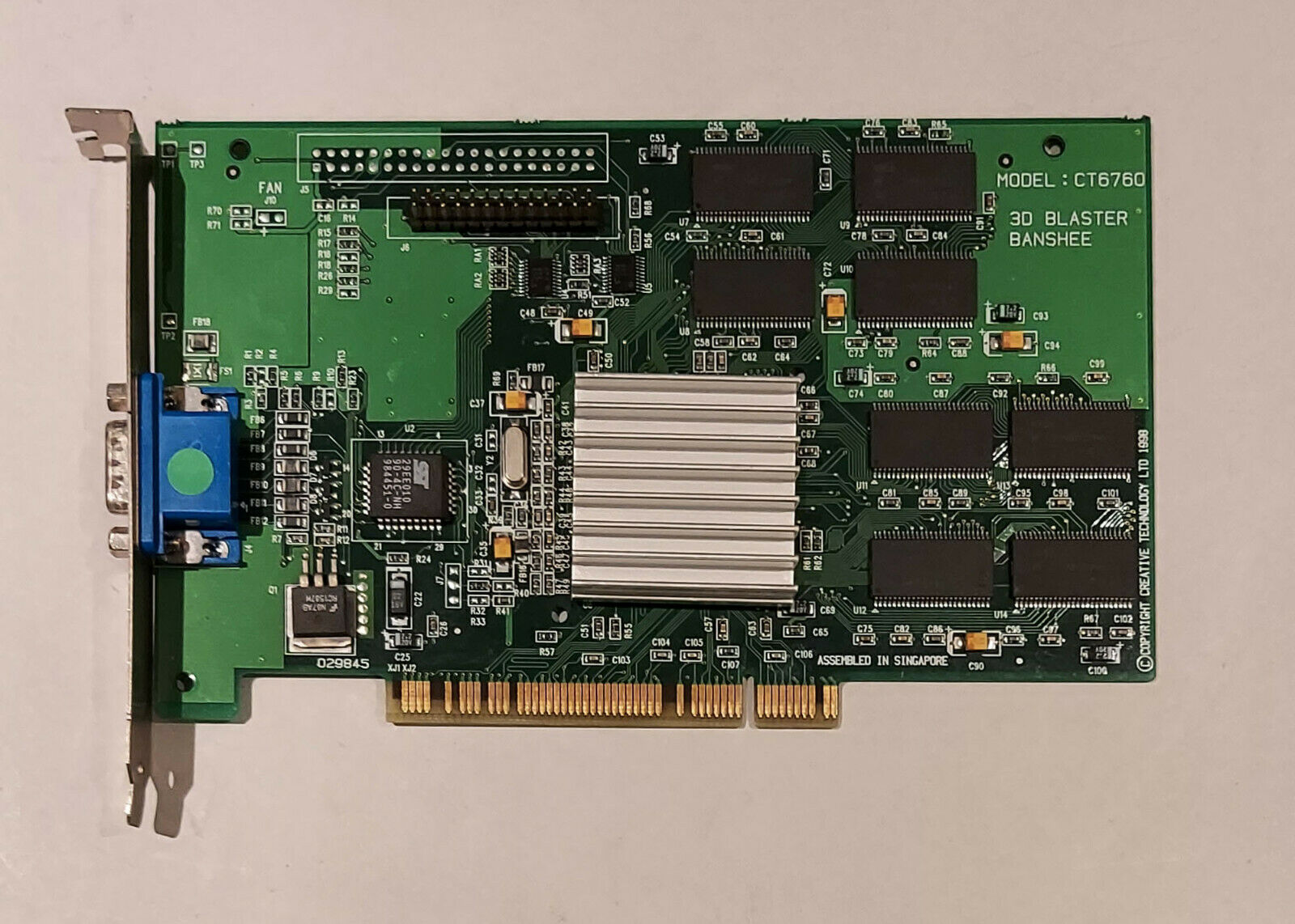
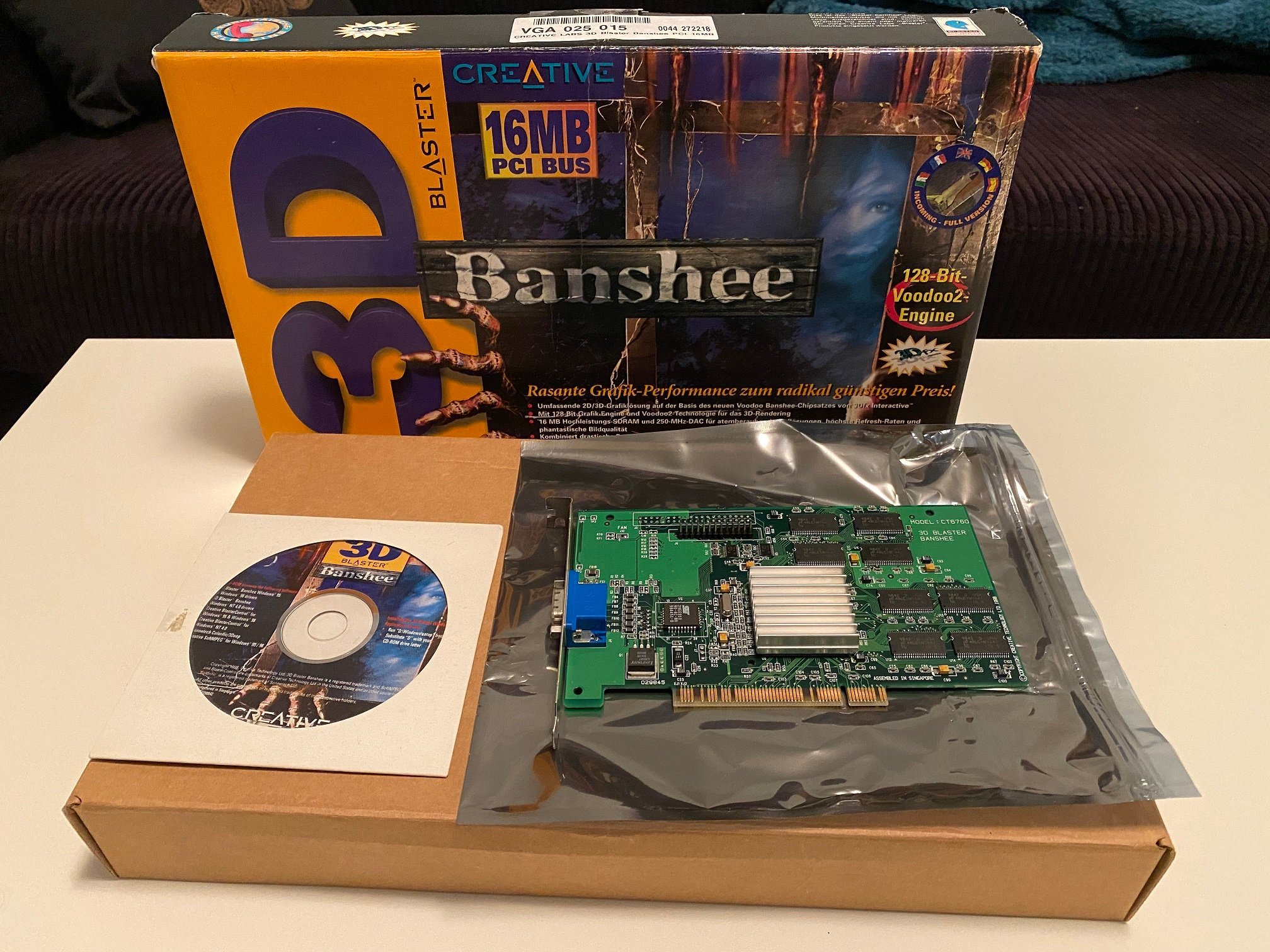
Creative Labs 3D Blaster Banshee PCI (CT6760, 16 MB)

Diamond Monster Fusion (AGP, 16 MB with overclocked 120 MHz memory)
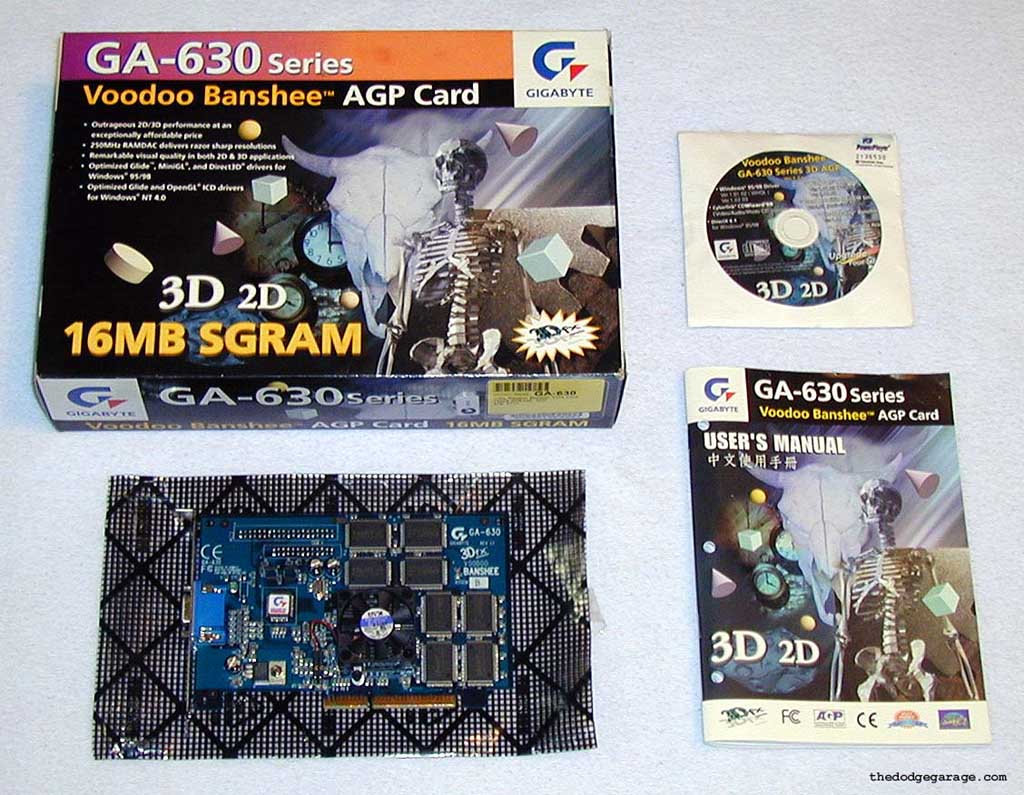
Gigabyte GA-630 (AGP, 16 MB SGRAM with overclocked 130 MHz memory)
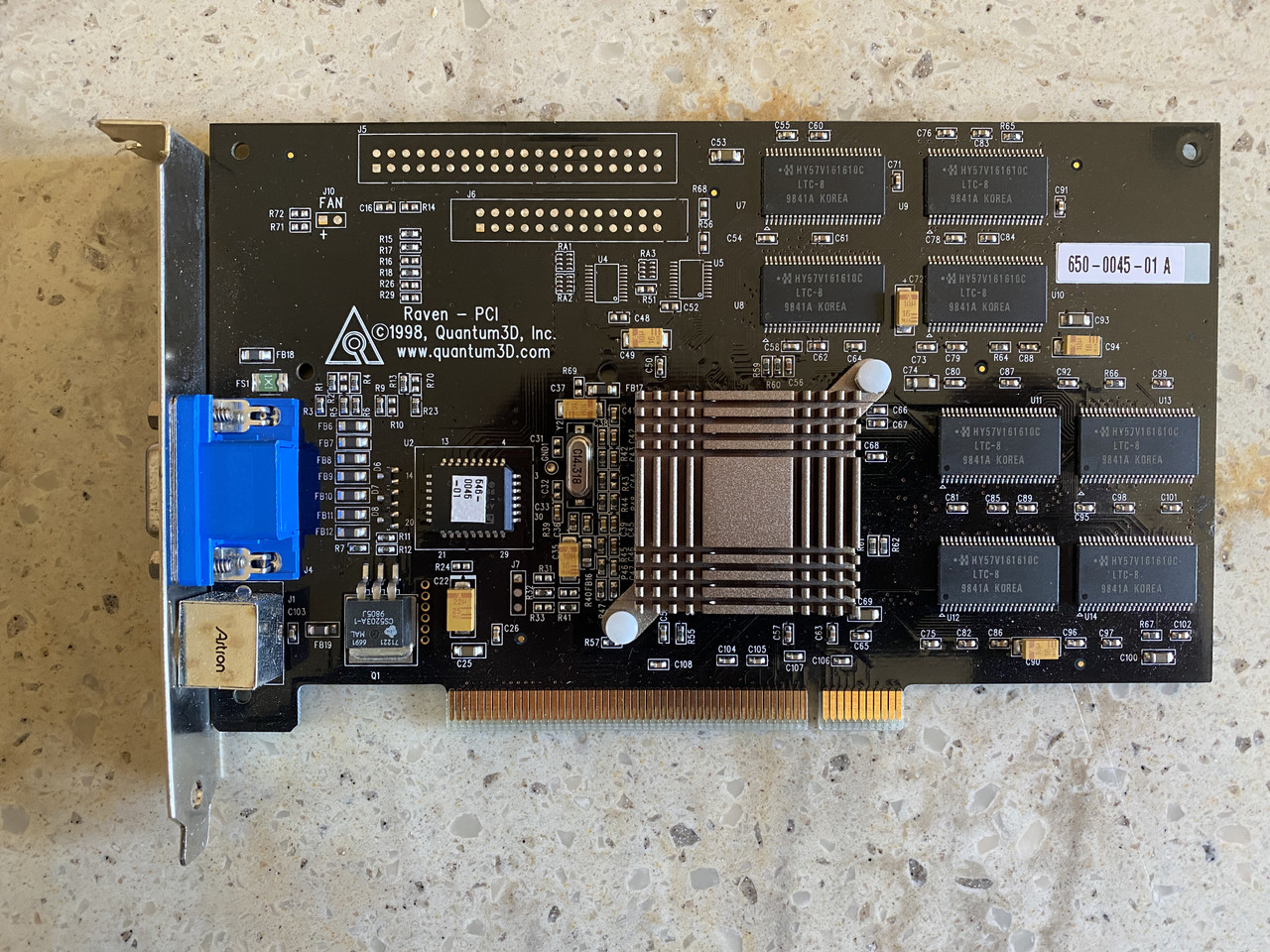
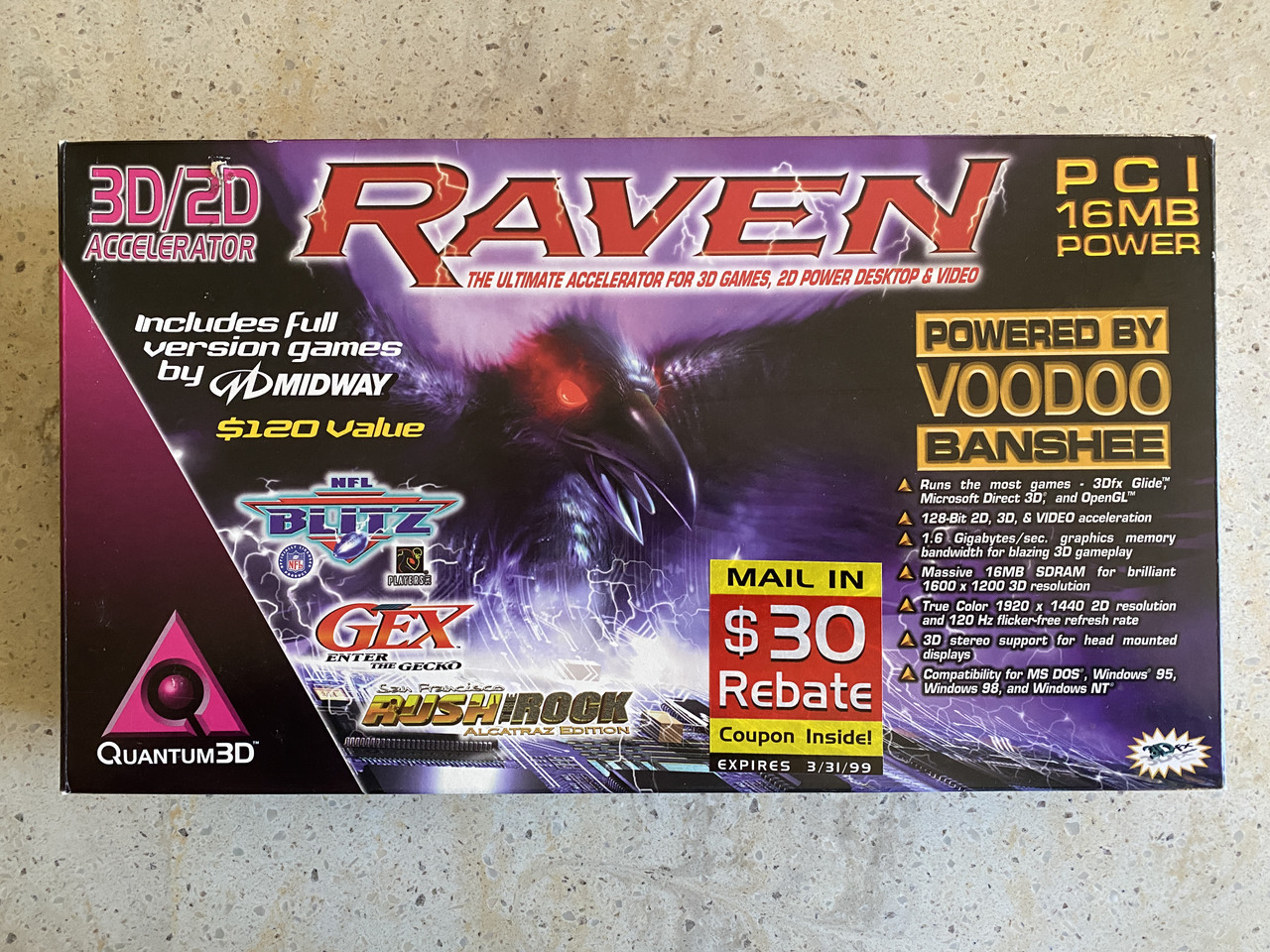

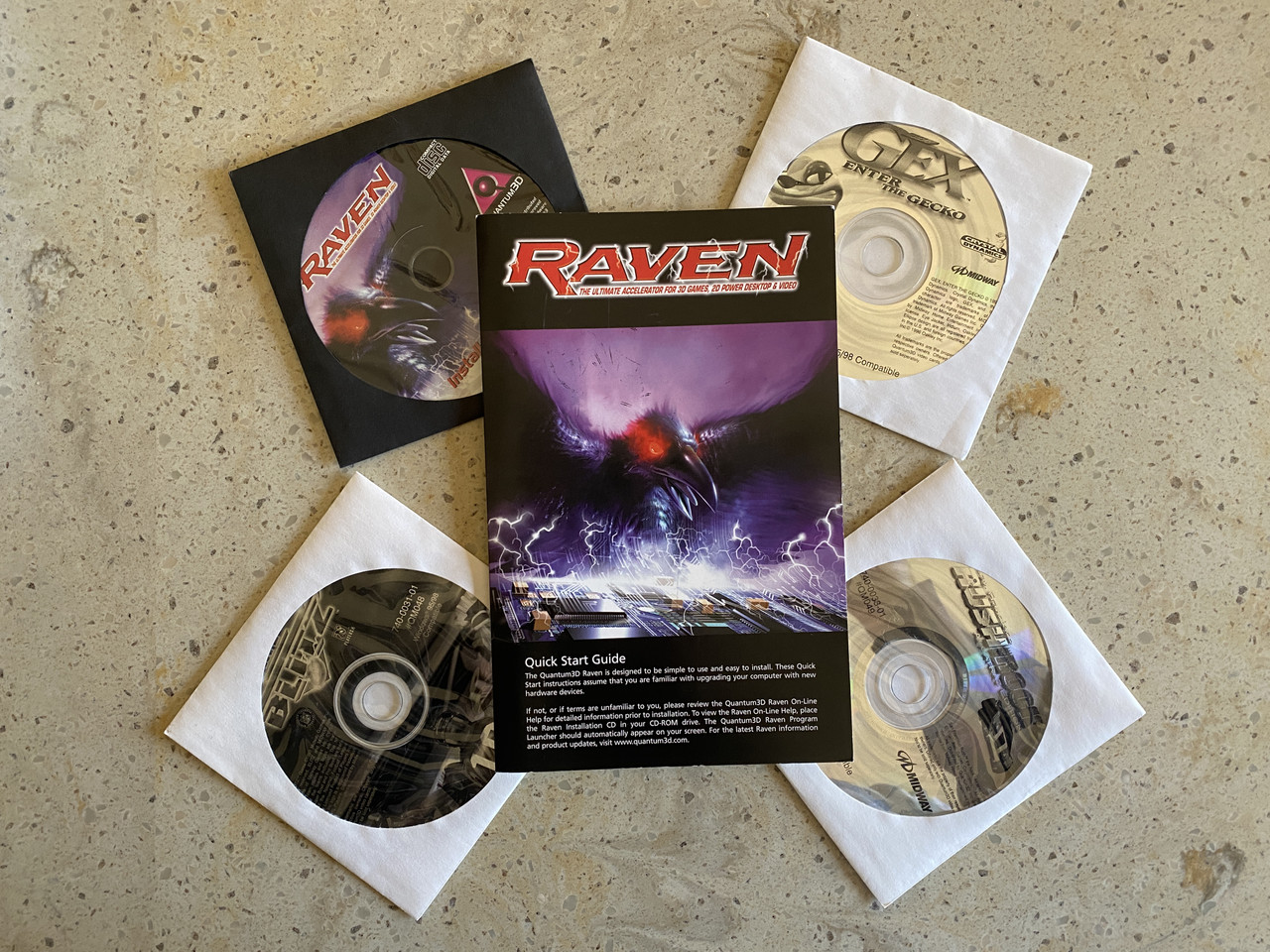
Quantum 3D Raven (16 MB) - Images courtesy of Vogons member Artex.
